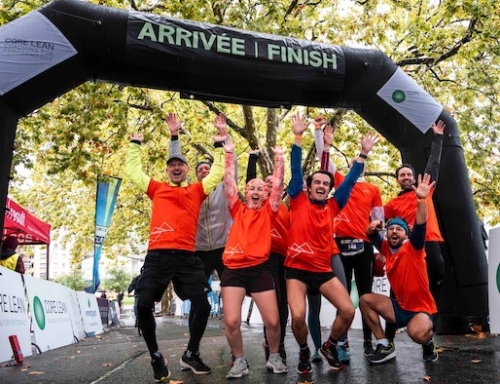Few participants undertake an Haute Route event without a goal. For some that may simply be to finish within the stipulated cut-off time while for others it may be a placing, or possibly even winning the event. And once the gun goes off, whether riders admit it or not, the goal often shifts to catching the person placed immediately above you.
Whatever your objective, on a 3 or 7-day event, to be successful you will need to adopt an incremental process of achieving smaller aligned goals, because as the saying goes “you can’t eat an elephant in one bite”. What’s more that process will start many months or even years before riding an Haute Route.
Later this year, I will ride both 7-day events back to back in the Pyrenees and the Alps for the first time. As one of the tallest and heaviest riders in the peloton, the laws of gravity are against me when the road starts to incline, so consequently my goal is to finish while also enjoying the experience. So to arrive in Pau on August 17 in the best possible physical and mental condition to ride 14 days, I have started to create my panoply of smaller aligned goals.
Goal setting is a proven psychological approach for generating intrinsic and extrinsic motivation and is known to help with focusing attention, to facilitate persistence and to mobilize knowledge-seeking behavior and strategies to support. Yet the key question remains: What is a good goal?
Research reveals that a good goal is motivating. The prospect of accomplishing it generates excitement thus making the necessary efforts to pursue it less demanding. Secondly, data shows that the goal must present a challenge as people are more motivated and energised by harder and more challenging goals. More importantly, the goal must be sufficiently specific and supported by frequent feedback to measure progress.
Beyond setting objectives, empirical studies indicate that the relationship towards goals is a leading factor in the successful pursuit. Research suggests the approach of “mental contrasting” which demands that we balance optimistic thoughts with the challenges that arise to achieve the goal is more effective than simply imagining successful goal achievement. Positive outcomes alone fool our minds into perceiving that the goal has already been attained, thus reducing the drive to pursue it. Instead, mental contrasting combines positive thinking with a more realistic outlook.
This form of visualisation that differs in that it doesn’t imagine a positive outcome but contrasts this with the reality of imagining what it will take to attain the goal using a process called “WOOP” that works as follows:
Wish (Goal) – Set a specific goal sufficiently challenging but also realistic
Outcome – Identify the best possible positive consequences or aspects of the goal being realized and how that would make you feel. Focus on the positive aspects, how they make you feel, visualise those in detail and savor them
Obstacle – Identify the main obstacles in the way of achieving the goal (both within and outside yourself). Envision these (e.g., habits, routines) in as much detail as you did when you visualised fulfilling the goal
Plan – Develop an action plan to overcome each challenge or obstacle.
This straightforward approach has been demonstrated to successfully result in improved academic performance, improved health, increased help-seeking, and help-giving behaviour.
Goal setting certainly requires positive thinking but as often like most pursuits in our professional and personal lives, it is about finding a balanced middle way. Our mental frames can have a significant impact on our psychology and physiology, which we’ll explore more next time.


